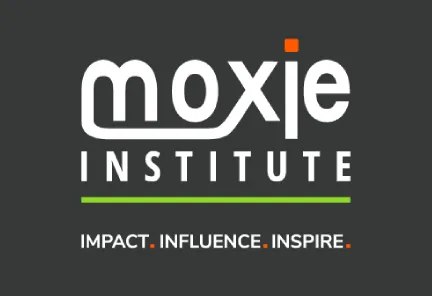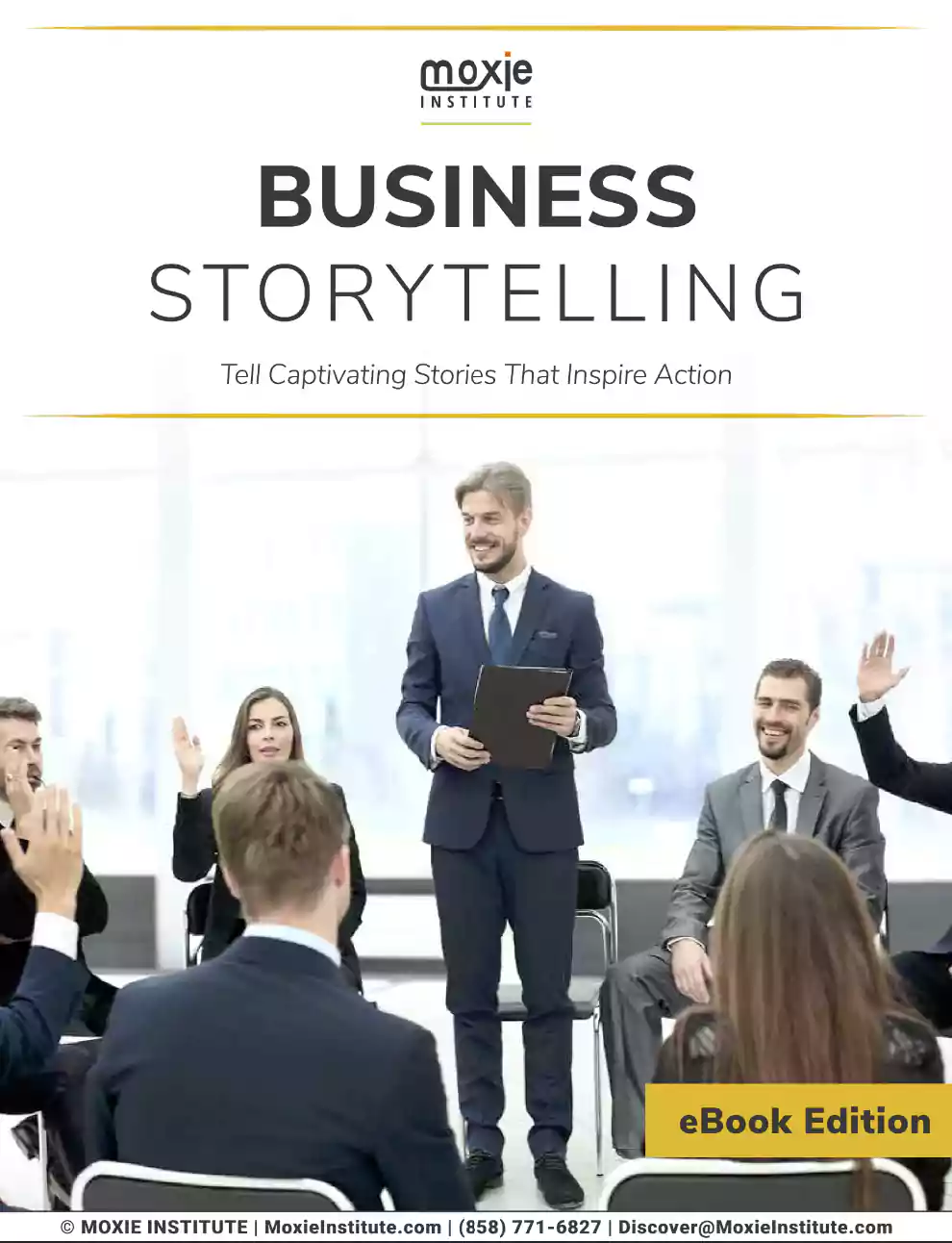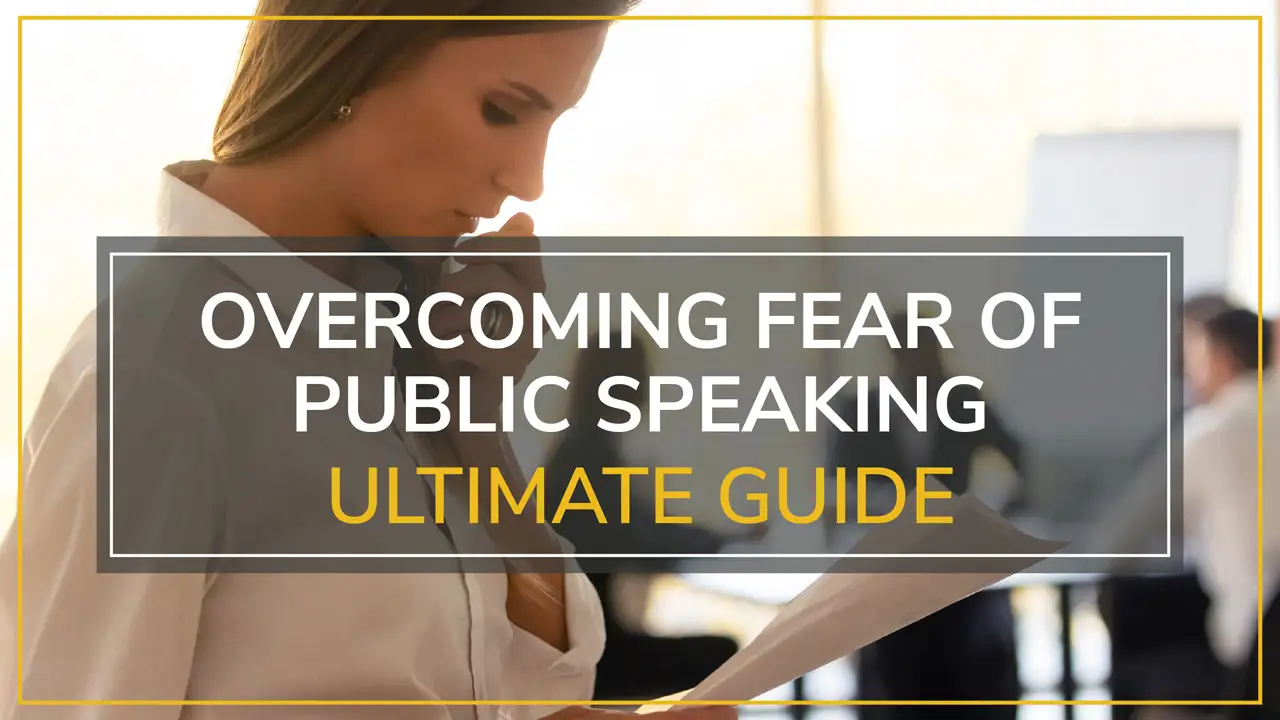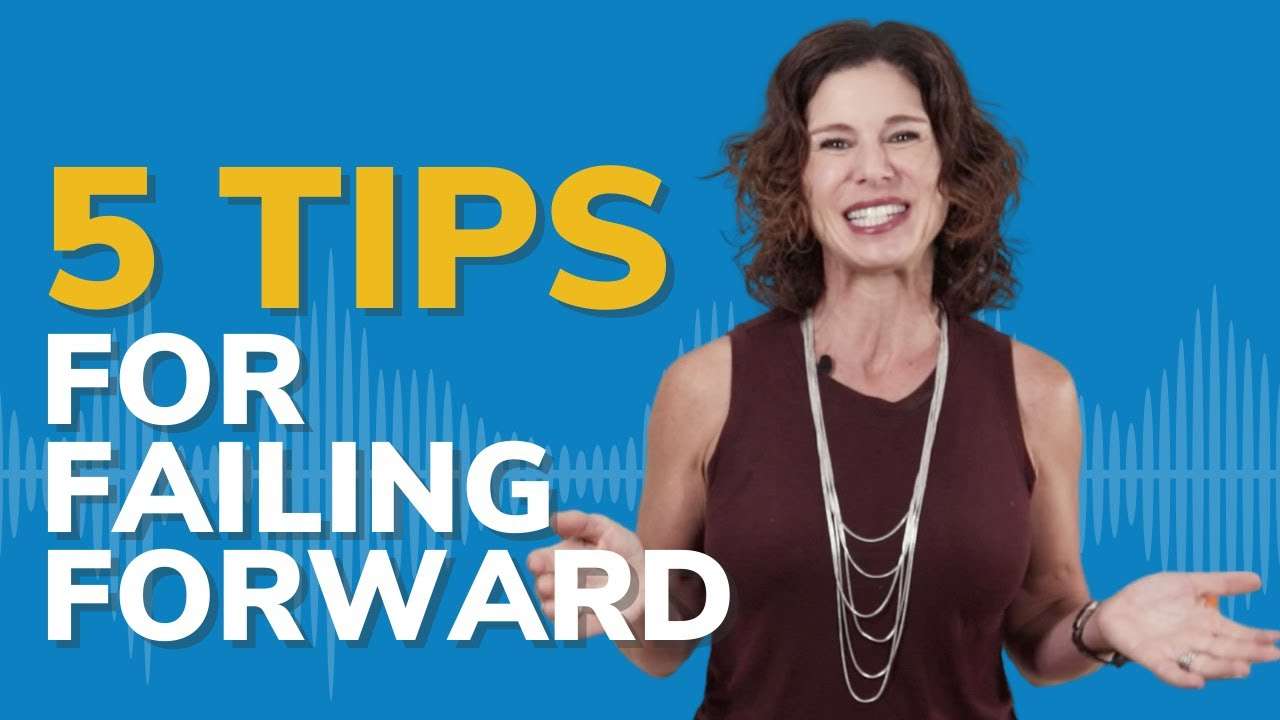Introduction: Why Audience Analysis Is Your Secret Weapon
How different would your speech look if you discovered your audience was completely different than you expected?
Imagine this: you spend weeks preparing the perfect pitch to introduce a new software system. Your slides are slick, the data is compelling, and you’re confident. But then 10 minutes in, you see glazed expressions, glances at phones, shuffling, restlessness. What went wrong?
More often than not, the problem isn’t with what you’ve written, but how little you actually know about your audience. One study done by the Army Research Institute found that after the speaker quality, the quality of the speech content is the most influential category for impacting audiences through speeches. A similar review done by the OECD found that the most powerful factors determining impact are the quality of the speaker and the quality of speech content. Not all speeches are for the purpose of persuasion, though. It’s at this stage that your message succeeds or fails.
In our work with thousands of professionals at Moxie Institute, we’ve found that speakers who do audience analysis with laser focus are three to four times more successful at accomplishing their goals than professionals who spend most of their time creating content. It’s no surprise when you think about the neuroscience behind this—our brains are designed to respond to content that we perceive as immediately relevant to our own lives, that delivers value to our personal situation.
This guide—the first in a 5-part series—will teach you how to use sophisticated audience analysis to clarify the purpose of your speech and use that clear speech purpose to create stronger messages and give public speaking presentations that make a real difference. Whether you’re gearing up for a high-stakes pitch, a leadership speech, or a complex technical explanation, your approach to every speech you give will be transformed by mastering public speaking through audience analysis.
The Science Behind Audience-Centered Communication
The best presentations aren’t just well-structured—they’re neurologically designed to resonate with how our brains process information. Knowing this science makes you a more effective speaker when it comes to creating purpose-filled speeches.
Neuroscience of Connection and Engagement
The human brain has an ongoing role as an information filter, deciding what is worth our attention and what we can safely ignore. Research from the NeuroLeadership Institute suggests that the brain makes these decisions based on a threat-reward assessment that occurs primarily at levels below conscious awareness.
When people see content that they feel is pertinent to their wants, needs, challenges, and aspirations, their brain rewards them with dopamine in that moment—a biochemical state of engagement. In contrast, the sense that something is irrelevant will prompt mild threat reactions, so the brain disengages, paying attention to something else instead.
It’s something we’ve seen in our executive coaching sessions as we watch it unfold in real time. One of our technology executive clients was confused by the unenthusiastic response to his product roadmap presentation. As we analyzed his target audience—financial stakeholders—we found out that what interested them wasn’t technical breakthroughs, but how those breakthroughs would affect quarterly revenue outlooks and market positioning.
By rethinking his presentation to speak to these particular issues in the beginning, he turned what he was presenting into a riveting story—one in which stakeholders were leaning forward, not looking down. This approach is a key component of effective public speaking skills that we teach in our training programs.
Key Neuroscience Insight: According to research published in the Journal of Cognitive Neuroscience, our brains consume approximately 20% of our body’s energy, making cognitive efficiency essential. This means audiences naturally conserve mental resources by engaging only with information they perceive as immediately relevant or valuable.
Psychological Barriers to Message Reception
No matter how brilliantly crafted your message, it can still fail if it crashes up against psychological barriers in your audience. Knowledge of these potential obstacles is essential for purposeful speech development.
Common psychological barriers include:
- Cognitive Load Issues: When presentations contain too much complex information without sufficient structure, audiences experience cognitive overload, significantly reducing comprehension and retention.
- Confirmation Bias: Audiences tend to embrace information that confirms existing beliefs while unconsciously filtering out contradictory data.
- Status Threat Responses: When presentations challenge an audience’s sense of status, competence, or autonomy, defensive psychological mechanisms can activate, creating resistance to even the most logical arguments.
- Attention Residue: If audience members are mentally preoccupied with other tasks or concerns, studies show they may physically be present but cognitively absent—capturing as little as 40% of your message.
In our work with healthcare leaders implementing organizational changes, we’ve seen how understanding these barriers dramatically improves message effectiveness. For example, one chief medical officer was struggling to gain buy-in for a new electronic health records system. Her initial presentations focused exclusively on efficiency data and cost savings.
After conducting deeper audience analysis, she discovered that physicians were primarily concerned about autonomy and time burdens rather than organizational metrics. By acknowledging these concerns directly and reframing the benefits in terms of enhanced patient care and reduced documentation time, she was able to transform resistance into cautious enthusiasm. This example showcases why working with a public speaking coach can be invaluable for navigating complex audience dynamics.
Cognitive Science Insight: Harvard Business Review research indicates that presentations that address potential objections preemptively are perceived as 60% more trustworthy than those that ignore audience concerns.
How Audience Analysis Shapes Your Speech Purpose
Understanding your audience isn’t just about making your content more engaging—it fundamentally shapes the objective of your speech. Let’s explore how audience insights should drive your core purpose and strategic approach.
The Four Core Speech Purposes
While speeches can serve many nuanced functions, most business presentations fall into four primary purpose categories:
- To Inform: Increasing audience understanding or knowledge
- To Persuade: Changing beliefs, attitudes, or behaviors
- To Inspire: Motivating emotional connection and action
- To Instruct: Teaching specific skills or processes
In our public speaking training sessions, we often find that speakers predetermine their purpose without sufficient audience analysis. For example, a sales leader might default to an informational approach when presenting quarterly results, when analysis reveals the real need is to inspire the team during a challenging period.
The most effective speakers understand that purpose should emerge from the intersection of three factors:
- What the audience needs and expects
- What the organization requires
- What the speaker aims to achieve
This balance is critical. When we coached a technology executive preparing for an industry keynote, her initial instinct was to create a purely informational presentation about emerging trends. However, audience analysis revealed that attendees were primarily seeking actionable strategies for implementation, not just awareness of trends.
By pivoting to an instructional purpose with inspirational elements, she was able to deliver a presentation that audience members rated as “immediately valuable” rather than merely “interesting”—a crucial distinction in effectiveness.
Aligning Purpose with Audience Expectations
Misalignment between your purpose and audience expectations creates what we call the “purpose gap”—a common reason why even well-delivered speeches fail to achieve their objectives. Our research shows that this misalignment occurs in nearly 70% of business presentations.
Here’s how to correctly align purpose with audience types:
Audience Type | Most Effective Primary Purpose | Secondary Purpose | Typically Ineffective Purpose |
Technical experts | Inform/Instruct | Persuade | Inspire |
Executive leadership | Persuade | Inform | Instruct (details) |
Cross-functional teams | Inform/Inspire | Instruct | Technical persuasion |
Sales teams | Inspire | Instruct | Technical information |
External clients | Persuade | Inform | Technical instruction |
General public | Inspire | Inform | Technical instruction |
Case Study Insight: When working with a pharmaceutical executive addressing research scientists, we discovered a critical purpose gap. Her presentation aimed to inspire enthusiasm about corporate values, but audience analysis showed the scientists primarily valued detailed technical information and evidence. By restructuring the presentation to lead with substantive research updates before connecting to broader themes, engagement scores increased by 64%.
Quick Takeaways on Speech Purpose:
- Your speech purpose should emerge from audience analysis, not precede it
- The most effective speakers can flex between multiple purposes based on audience needs
- When audience analysis reveals competing needs, consider segmenting your presentation with distinct purpose-driven sections
- In situations with mixed audiences, prioritize purposes based on decision-maker needs
- Always validate your purpose assumptions through pre-speech stakeholder conversations
Essential Audience Analysis Frameworks
To move beyond surface-level audience understanding, we’ve developed three proprietary frameworks that help speakers systematically analyze their audiences and clarify their speech purpose.
The 5D Audience Insight Method
Based on our work with Fortune 500 executives, the 5D framework provides a comprehensive structure for gathering critical audience intelligence:
- Demographics: Basic compositional factors (size, role diversity, seniority levels, technical background)
- Drivers: Motivations, values, goals, and priorities that influence audience reception
- Decision Factors: Key considerations that shape how your audience makes choices
- Disposition: Current attitudes, knowledge levels, and potential resistance points
- Delivery Context: Environmental and situational factors that impact reception
When applying this framework with a healthcare technology client preparing for a board presentation, we discovered that while their content addressed demographics and some drivers, it completely overlooked the board’s decision factors and current disposition toward similar initiatives that had previously underperformed.
By restructuring the presentation to directly address these concerns—specifically highlighting implementation safeguards and differentiation from previous efforts—the executive was able to secure funding for a critical initiative that had been previously rejected twice.
Pro Tip: Decision Factor Deep Dive The “Decision Factors” dimension often yields the most strategic insights. For executive audiences, we recommend creating a specific decision criteria map that outlines:
- Primary decision metrics they typically apply
- Risk tolerance thresholds for similar decisions
- Past decision patterns on related matters
- Competing priorities that may influence decisions
- Decision-making style (analytical vs. intuitive)
The Stakeholder Empathy Map
For particularly complex or high-stakes presentations, we use an adapted empathy mapping technique that helps speakers move beyond logical analysis to emotional understanding:
The Stakeholder Empathy Map explores:
Thinks: What is your audience thinking about this topic? What occupies their mind?
- Analytical considerations
- Questions they’re asking themselves
- Intellectual concerns or interests
Feels: What emotions might your audience experience?
- Fears and anxieties
- Hopes and aspirations
- Potential sources of frustration
Sees: What does your audience observe in their environment?
- Market trends they’re witnessing
- Competitor activities they’re tracking
- Examples and case studies they’ve been exposed to
Hears: What information is reaching your audience from other sources?
- What their peers are saying
- What leadership is communicating
- Industry conversations and narratives
Says/Does: How does your audience express themselves on this topic?
- Public statements vs. private concerns
- Actions that may contradict stated positions
- Implementation challenges they face
This framework proved transformative for a manufacturing executive we coached who was struggling to gain adoption for a major operational change. By mapping the empathy dimensions, she discovered a significant gap between what managers were saying publicly about the initiative (general support) and their private concerns about implementation timelines.
This insight allowed her to preemptively address these unspoken concerns, dramatically improving buy-in and accelerating adoption rates.
The Resistance-Readiness Scale
One of the most powerful audience analysis tools we’ve developed is the Resistance-Readiness Scale, which helps speakers gauge where their audience falls on a spectrum from active resistance to enthusiastic readiness.
The Resistance-Readiness Spectrum:
- Active Resistance: Opposed to your message with specific objections
- Passive Resistance: Skeptical but not openly oppositional
- Neutral/Unaware: No strong opinion or insufficient information
- Conceptual Agreement: Intellectually supportive but not committed to action
- Active Readiness: Prepared to act on your message
Understanding where your audience falls on this spectrum is crucial for determining your speech purpose. For example:
- An audience at level 1-2 requires a persuasive approach that addresses objections
- An audience at level 3 needs informational content to establish foundational understanding
- An audience at level 4 benefits most from inspirational content that converts agreement to action
- An audience at level 5 is best served by instructional content focused on implementation
Try It Yourself: Resistance Mapping
For your next presentation, analyze where different segments of your audience fall on the Resistance-Readiness Scale by asking these questions:
- What is this audience segment’s current level of knowledge about my topic?
- What previous experiences (positive or negative) have they had with similar ideas?
- How does my message align with or challenge their existing priorities?
- What would they need to change or sacrifice to act on my message?
- What organizational or personal constraints might prevent them from embracing my message?
Rate each factor on a scale of 1-5, then average the scores to determine their general position on the Resistance-Readiness spectrum. This analysis will help you identify whether your primary purpose should be to inform, persuade, inspire, or instruct.
Common Audience Analysis Mistakes That Derail Your Speech Purpose
Through our work with thousands of speakers across industries, we’ve identified three critical audience analysis mistakes that consistently undermine speech effectiveness. Understanding these pitfalls will help you avoid them in your own preparation process.
Mistake #1: Assuming Homogeneity
One of the most common and damaging mistakes speakers make is treating their audience as a homogeneous group with uniform knowledge, interests, and priorities. This oversimplification leads to presentations that resonate with some audience members while alienating others.
The Reality Check: Most business audiences contain multiple stakeholder groups with distinct:
- Information needs
- Technical knowledge levels
- Decision-making authority
- Organizational priorities
- Personal motivations
In our executive coaching practice, we frequently encounter this issue with cross-functional presentations. One memorable example involved a CTO presenting a digital transformation initiative to a mixed audience of IT staff, department heads, finance leaders, and C-suite executives.
His initial presentation used consistent technical depth throughout—too basic for his IT team but too jargon-heavy for department leaders. By redesigning the presentation with tiered content addressing different stakeholder concerns, he was able to effectively engage all audience segments simultaneously.
Solution Strategy: Rather than aiming for a one-size-fits-all approach, segment your audience into 2-3 key stakeholder groups and identify:
- Core concerns specific to each segment
- Knowledge gaps that need addressing
- Unique value propositions for each group
- Potential resistance points by segment
Then structure your presentation to methodically address each group’s needs while maintaining a coherent narrative thread. This is an advanced public speaking tip that can dramatically improve your presentation effectiveness.
Mistake #2: Prioritizing Content Over Context
Many speakers become so focused on perfecting their content that they neglect the critical contextual factors that determine how receptive their audience will be. Context factors often have a greater impact on message reception than content quality.
Key Contextual Factors:
- Timing Context: When in the day/week/quarter your presentation occurs
- Monday morning vs. Friday afternoon attentiveness
- Pre-lunch vs. post-lunch cognitive capacity
- Proximity to fiscal deadlines or reporting periods
- Environmental Context: Physical or virtual setting
- Room setup and comfort factors
- Technology limitations or opportunities
- Virtual meeting fatigue considerations
- Organizational Context: Current business situation
- Recent performance trends (positive or challenging)
- Organizational changes or restructuring
- Competing initiatives or priorities
- Preceding Content Context: What the audience heard before you
- Previous presentations that may conflict with yours
- Information overload from dense agendas
- Emotional responses to preceding content
We worked with a sales executive who couldn’t understand why her quarterly strategy presentations consistently failed to generate enthusiasm despite strong content. Contextual analysis revealed she was always presenting last in day-long meetings when audience energy was depleted.
By negotiating an earlier slot and restructuring her presentation to account for existing energy levels, she saw immediate improvement in engagement and implementation of her strategies.
Contextual Analysis Questions:
- What will happen immediately before and after my presentation?
- What organizational events or circumstances might affect receptivity?
- What environmental factors could enhance or detract from my message?
- How might timing impact audience energy and attention?
Mistake #3: Neglecting Audience Resistance Factors
Perhaps the most subtle yet damaging mistake is failing to identify and address the specific reasons your audience might resist your message. This oversight often derails otherwise well-crafted presentations.
Resistance typically stems from one of six primary sources:
- Self-Interest Conflicts: Your message appears to threaten something valued by audience members (status, resources, control)
- Cognitive Dissonance: Your message contradicts existing beliefs or previous commitments
- Reactance: Your approach triggers psychological resistance to perceived pressure
- Implementation Concerns: Practical obstacles to action seem overwhelming
- Trust Deficits: Credibility issues undermine message reception
- Priority Conflicts: Your message competes with more urgent or important concerns
If you experience public speaking anxiety when facing resistant audiences, you’re not alone. Many speakers find resistance particularly challenging to navigate. In our executive coaching work, we encountered an HR director struggling to gain leadership buy-in for a new performance management system. Her content was compelling, but audience analysis revealed strong resistance stemming from previous failed implementations.
By restructuring her presentation to explicitly acknowledge this history and detail specific differentiation points, she was able to overcome the resistance that had previously blocked her message.
Resistance Reduction Techniques:
- Explicitly acknowledge legitimate concerns rather than ignoring them
- Provide evidence specifically targeted at the most likely resistance points
- Include stories of similar stakeholders who overcame initial skepticism
- Frame changes in terms of audience values rather than organizational mandates
- Offer phased implementation options that reduce perceived risk
Critical Insight: Our analysis of over 500 executive presentations reveals that addressing the top three audience resistance factors increases persuasive effectiveness by approximately 65%.
Step-by-Step Audience Analysis Process

Now that we’ve explored key concepts and common pitfalls, let’s establish a systematic process for conducting comprehensive audience analysis that will clarify your speech purpose.
Pre-Analysis Research Methods
Effective audience analysis begins well before you start crafting your presentation. These research methods provide the foundation for deeper understanding:
- Stakeholder Interviews
- Conduct 3-5 brief conversations with representative audience members
- Ask about expectations, concerns, and desired outcomes
- Probe for unstated needs and potential resistance points
- Organizational Intelligence Gathering
- Review recent communications to understand current priorities
- Analyze previous presentations on similar topics (what worked/failed)
- Identify recent developments that might impact receptivity
- Decision-Making Pattern Analysis
- Research how this audience has made similar decisions in the past
- Identify key factors that influenced previous outcomes
- Understand who influences decisions even if they lack formal authority
- Environmental Assessment
- Determine presentation logistics and constraints
- Identify potential technological or environmental challenges
- Assess timing considerations that might affect receptivity
One pharmaceutical executive we coached was preparing for a critical drug development presentation to research leadership. By conducting pre-analysis interviews, she discovered that three previous proposals had been rejected primarily due to scalability concerns. This insight allowed her to restructure her presentation to address scalability upfront, leading to project approval.
Research Synthesis Framework: After gathering raw data, organize your findings into these categories:
- Known Facts: Verified information about your audience
- Assumptions: Educated guesses that require validation
- Knowledge Gaps: Important missing information
- Red Flags: Potential challenges or resistance points
- Opportunity Areas: Particular interests or pain points to leverage
Creating Audience Personas for Complex Groups
For presentations to diverse audiences, creating 2-3 audience personas can significantly enhance your strategic approach. These detailed profiles represent key audience segments and help you ensure your content addresses diverse needs.
Audience Persona Template:
PERSONA NAME: [Representative title or role]
ROLE ATTRIBUTES:
- Primary responsibilities
- Key performance metrics
- Decision-making authority
KNOWLEDGE LEVEL:
- Technical expertise in your subject
- Relevant experience with similar topics
- Information gaps to address
MOTIVATIONAL FACTORS:
- Primary professional goals
- Personal success metrics
- Risk tolerance profile
KEY CONCERNS:
- Specific challenges or pain points
- Potential objections to your message
- Implementation barriers they face
COMMUNICATION PREFERENCES:
- Data vs. story orientation
- Detail level preferences
- Format and delivery preferences
We helped a technology executive prepare for a board presentation on cybersecurity investments by developing personas for three key audience segments: financially-focused board members, technically-oriented directors, and risk management specialists.
By mapping content to address the primary concerns of each persona, he was able to create a unified presentation that still addressed the diverse needs of his complex audience.
Multiple Persona Management Strategy: When addressing diverse audience segments:
- Begin with content relevant to all personas
- Use signposting language to direct attention (“For those focused on implementation…”)
- Layer technical depth strategically to engage experts without losing others
- Prepare supplemental materials for segment-specific details
- Plan for focused Q&A that addresses segment-specific concerns
Turning Analysis into Action
The final step in the audience analysis process is translating your insights into specific content and structural decisions. This action plan ensures your audience’s understanding directly shapes your speech purpose and approach.
Purpose Alignment Decision Matrix:
Audience Factor | Content Implication | Structural Approach | Delivery Consideration |
Technical knowledge level | Terminology complexity; depth of explanation | Amount of supporting detail | Use of analogies or examples |
Primary motivation | Benefits to emphasize | Opening hook selection | Energy and enthusiasm level |
Key concerns | Objections to address | When to address barriers | Tone for addressing concerns |
Decision criteria | Evidence types to include | Data presentation strategy | Credibility establishment |
Resistance level | Persuasive approach | Amount of evidence needed | Interaction strategy |
Using this matrix, map each major audience insight to specific decisions about your content, structure, and delivery approach.
Implementation Example: For a healthcare executive presenting a new patient care initiative, audience analysis revealed:
- Audience Factor: Physicians concerned about added administrative burden
- Content Implication: Include specific time-saving features and ROI on time investment
- Structural Approach: Address time concerns in first 3 minutes
- Delivery Consideration: Use peer physician testimonial to establish credibility
By systematically mapping insights to actions, her presentation directly addressed the most significant barrier to adoption, resulting in 78% physician opt-in compared to 34% for previous initiatives.
Advanced Techniques: Adapting to Multi-Stakeholder Audiences
Some of the most challenging presentation scenarios involve addressing multiple stakeholder groups with divergent priorities in the same room. These situations require sophisticated audience analysis and strategic communication approaches.
Addressing Competing Priorities
When audience segments have fundamentally different priorities, traditional compromise often produces presentations that partially disappoint everyone. Instead, we recommend these advanced techniques:
1. Priority Mapping and Weighted Analysis
Rather than treating all audience concerns equally, conduct a weighted analysis that accounts for decision influence and impact:
- Identify all stakeholder priorities
- Weight them based on decision influence (1-10 scale)
- Map interconnections between priorities
- Identify potential conflicts and alignments
This process helps you make strategic decisions about which priorities to emphasize while acknowledging others.
2. The Concentric Priorities Approach
This framework organizes content in concentric circles:
- Core content (center): Addresses universal priorities relevant to all
- Secondary ring: Addresses major stakeholder-specific concerns
- Outer ring: Addresses specialized interests (often through supplementary materials)
By structuring content this way, you ensure all stakeholders receive essential information while strategic stakeholders get their specific needs met.
3. The Common Ground Strategy
When priorities seem incompatible, look for underlying shared values or goals:
- Identify fundamental objectives all stakeholders share
- Frame competing priorities as different paths to common goals
- Use these shared values as the foundation for your message
In our work with a manufacturing executive navigating conflicts between operations and finance teams, we identified efficiency as a shared value, even though it was defined differently by each group. By framing her initiative in terms of this common ground, she created a unified narrative that resonated across divisions.
Many professionals find that these complex multi-stakeholder situations trigger fear of public speaking. Working with a speech coach can help you develop the confidence to manage these challenging dynamics effectively.
Creating Unified Messages for Diverse Groups
Beyond addressing competing priorities, these techniques help create messages that unify diverse audiences:
1. The Tiered Information Approach
Structure presentations in layers of increasing specificity:
- Level 1: High-level message accessible to all
- Level 2: Supporting information for general understanding
- Level 3: Detailed exploration for technical stakeholders
This approach allows audience members to mentally engage at their appropriate level while ensuring everyone captures the core message.
2. Strategic Narrative Frameworks
Use story structures that naturally accommodate diverse perspectives:
- Challenge narratives: Unite audiences around common obstacles
- Opportunity stories: Focus on shared benefits despite different roles
- Transformation journeys: Connect different stakeholders to a unified vision
A healthcare executive we coached used a patient journey narrative to unite clinicians, administrators, and IT staff around an electronic health records implementation, helping each group see their role in the larger story.
3. Multi-Perspective Evidence Portfolios
Build evidence sets that speak to different stakeholder values:
- Financial metrics for ROI-focused audiences
- Operational data for implementation teams
- Strategic alignment for executive stakeholders
- User experience measures for end-user representatives
By thoughtfully incorporating diverse evidence types, you demonstrate respect for various stakeholder perspectives while building a comprehensive case.
Advanced Implementation Case Study: When a technology executive needed to present a major systems overhaul to a diverse audience of finance leaders, department heads, IT specialists, and end users, we helped him implement a multi-dimensional approach:
- He opened with a unified vision story highlighting shared business outcomes
- He structured core content in tiered information layers
- He used signposting language to direct specific segments (“For those focused on implementation timelines…”)
- He prepared segment-specific supplementary materials
- He incorporated multi-perspective evidence addressing diverse concerns
This approach resulted in unprecedented alignment across divisions and accelerated approval for a previously stalled initiative. The executive credited enhanced public speaking skills gained through targeted training for his ability to navigate this complex presentation successfully.
Your Audience Analysis Action Plan

Now it’s time to translate these insights into a practical workflow you can apply to your next presentation. This step-by-step plan will guide you through implementing effective audience analysis to clarify your speech purpose.
1. Gather Intelligence (1-2 Weeks Before)
- Schedule 3-5 brief stakeholder conversations with representative audience members
- Research organizational context and recent developments
- Review any previous presentations on similar topics
- Identify potential resistance points and knowledge gaps
- Analyze the physical or virtual presentation environment
2. Develop Audience Framework (5-7 Days Before)
- Apply the 5D Audience Insight Method to organize your findings
- Create audience personas for 2-3 key stakeholder segments
- Map audience segments on the Resistance-Readiness Scale
- Complete a Stakeholder Empathy Map for critical decision-makers
- Identify the primary contextual factors that might impact reception
3. Clarify Your Purpose (3-5 Days Before)
- Determine whether your primary purpose should be to inform, persuade, inspire, or instruct
- Identify any secondary purposes for specific audience segments
- Create purpose statements aligned with audience needs:
- “My purpose is to [ACTION VERB] the audience about [TOPIC] so that they [DESIRED OUTCOME]”
- Test your purpose against audience analysis findings
4. Design Purpose-Driven Structure (2-3 Days Before)
- Create an outline that directly addresses key audience priorities
- Develop opening hooks tailored to audience concerns
- Map key points to specific audience needs and resistance factors
- Design section transitions that maintain engagement
- Create segment-specific content where necessary
5. Refine and Test (1-2 Days Before)
- Review your content against audience analysis findings
- Verify that your approach addresses potential resistance points
- Test key messages with a representative colleague if possible
- Prepare for likely questions based on audience priorities
- Make final adjustments to align with audience expectations
For particularly high-stakes presentations, consider attending a public speaking workshop to refine your delivery and receive expert feedback on your approach.
Implementation Roadmap:
Timeframe | Key Actions | Output |
1-2 Weeks Before | Intelligence gathering | Raw audience data |
5-7 Days Before | Framework development | Structured audience understanding |
3-5 Days Before | Purpose clarification | Clear purpose statement |
2-3 Days Before | Structure design | Purpose-driven outline |
1-2 Days Before | Refinement and testing | Audience-optimized presentation |
By following this timeline, you’ll ensure that your speech purpose emerges from genuine audience understanding rather than assumptions or personal preferences.
Audience Analysis Checklist:
- Identified key audience segments and their characteristics
- Mapped audience’s current knowledge level and gaps
- Understood audience’s primary motivations and concerns
- Analyzed potential resistance points and objections
- Considered contextual factors that might impact reception
- Clarified primary and secondary speech purposes
- Aligned content structure with audience priorities
- Prepared for likely questions and concerns
- Created segment-specific content where necessary
- Verified that opening will engage key decision-makers
Frequently Asked Questions
How detailed should my audience analysis be for a short presentation?
Even for brief presentations (10-15 minutes), basic audience analysis is critical. At minimum, spend 20-30 minutes considering these four essential factors:
- Decision Authority: Who has the power to act on your message?
- Knowledge Baseline: What does your audience already know about your topic?
- Primary Concerns: What matters most to this particular audience?
- Resistance Points: What might prevent them from accepting your message?
For longer or higher-stakes presentations, increase your analysis depth proportionally. Executive-level or board presentations typically warrant 3-5 hours of audience analysis. Working with a public speaking coach can help you develop an efficient process for audience analysis that scales based on presentation importance.
What if I have very limited information about my audience?
When audience information is limited, follow this three-step approach:
- Maximize what you can learn: Even one conversation with someone familiar with the audience can provide valuable insights.
- Make strategic assumptions: Based on role, industry, or organization type, make educated guesses about likely priorities and concerns.
- Build adaptability into your presentation: Create content that allows for real-time adjustments based on audience reactions. Include optional slides, prepare for various questions, and develop content at multiple technical levels.
Remember that limited information increases risk, so prepare thoroughly for various scenarios and be ready to pivot based on in-the-moment feedback.
How do I analyze an audience for a virtual presentation?
Virtual presentations require special audience analysis considerations:
- Attention Factors: Virtual audiences typically have 30-40% shorter attention spans and more distractions. Plan for more engagement elements, stronger hooks, and content chunked into 5-7 minute segments.
- Technology Context: Assess what platforms your audience commonly uses, their comfort with virtual tools, and potential technical limitations.
- Participation Barriers: Virtual settings often reduce participation willingness by 50-60%. Plan more deliberate engagement strategies and consider pre-session surveys to gather insights.
- Environment Variations: Unlike in-person events, virtual audiences experience your presentation from diverse environments with varying distraction levels. Design for interrupted attention with clear signposting and frequent recapping.
- Connection Challenges: Analyze whether relationship-building is needed before content delivery, as virtual settings make establishing trust more difficult.
In our coaching practice, we’ve found that virtual presentations require approximately 25% more audience analysis effort than in-person equivalents to achieve similar effectiveness. If you’re dealing with public speaking anxiety in virtual settings, remember that thorough audience preparation can significantly reduce your stress by increasing your confidence in the relevance of your content.
How can I analyze an audience I’ve never presented to before?
For unfamiliar audiences, implement this five-step discovery process:
- Proxy Conversations: Identify 2-3 people similar to your audience or who have presented to them before. Ask about audience priorities, communication preferences, and potential concerns.
- Digital Research: Investigate organization websites, LinkedIn profiles, recent presentations, and public statements to understand key priorities and challenges.
- Event Analysis: Review the context of your presentation—event agendas, speaker descriptions, and stated objectives provide insight into audience expectations.
- Industry Knowledge Mapping: Research industry trends and challenges currently affecting your audience to align your content with their most pressing concerns.
- Early Arrival Strategy: Arrive early to observe audience interactions, listen to conversations, and have informal discussions before your presentation begins.
One manufacturing executive we coached used this approach when addressing an industry conference where she knew only the general audience composition. By interviewing several industry colleagues and analyzing the conference agenda, she identified a recent regulatory challenge affecting most attendees. By addressing this concern early in her presentation, she immediately established relevance and credibility.
For professionals who struggle with fear of public speaking in unfamiliar settings, this thorough preparation approach can significantly reduce anxiety by creating a sense of connection with the audience before you even begin speaking.
What’s the best way to handle a mixed audience with different levels of technical knowledge?
Mixed technical knowledge is one of the most common audience challenges. Our recommended approach is the “technical sandwich” method:
- Begin with universal content: Start with concepts, problems, or opportunities that resonate with all knowledge levels.
- Signal technical transitions: Before diving into technical content, use clear verbal signposts (“Now I’ll share some technical details for those involved in implementation…”).
- Layer technical content thoughtfully: Present technical information in increasing depth, allowing non-technical audience members to grasp core concepts while giving experts the detail they need.
- Provide conceptual frameworks: Give non-technical audiences mental models or analogies to understand complex information.
- Return to universal implications: After technical sections, reconnect to broader implications all audience members care about.
- Supplement with resources: Provide detailed technical documentation for experts while keeping the presentation accessible.
A technology executive we worked with successfully used this approach when presenting a cybersecurity initiative to a board with varied technical backgrounds. She began with universal business risks, clearly signaled her transition to technical details, provided a simple conceptual framework, and concluded with business implications that resonated with all members.
This advanced approach is among the valuable public speaking tips we teach in our comprehensive training programs at Moxie Institute.
How do I adjust my speech purpose if I discover my audience has different expectations than anticipated?
When audience expectations differ from your planned approach, follow this adaptation framework:
- Assess the gap: Determine whether the difference is about content (what information they need) or purpose (what outcome they expect).
- Content gaps can often be addressed through:
- Acknowledging the unexpected focus directly
- Restructuring your presentation order to address key concerns earlier
- Emphasizing different aspects of your prepared content
- Offering to provide additional information after the presentation
- Purpose gaps require more significant adjustment:
- If you prepared to inform but they need persuasion, strengthen your benefits and evidence sections
- If you prepared to persuade but they need information, focus on establishing foundational understanding first
- If you prepared technical content but they need strategic framing, elevate your key insights and business implications
- Transparency works: When significant misalignment occurs, acknowledging it directly often builds credibility: “I understand many of you are more interested in implementation challenges than strategic overview. Let me adjust to address those concerns first.”
A healthcare executive we coached discovered mid-presentation that her audience of department heads was expecting detailed implementation guidance rather than the high-level strategic overview she had prepared. By transparently acknowledging this mismatch and pivoting to address their immediate concerns, she was able to salvage what could have been a disconnected presentation.
How might audience analysis differ for internal versus external presentations?
Internal and external audiences require different analysis approaches:
Internal Audience Considerations:
- Organizational context is critical—recent events, politics, and history
- Existing relationships and past interactions heavily influence reception
- Knowledge of internal language, acronyms, and references can be assumed
- Position in organizational hierarchy affects how messages are received
- Internal resistance often relates to resource competition or past experiences
External Audience Considerations:
- Establishing credibility and relevance is a higher initial priority
- Organizational context must be explicitly established rather than assumed
- Industry-specific versus general language needs careful consideration
- Competitive positioning often influences how messages are received
- External resistance typically relates to differentiation questions or implementation concerns
In our experience coaching executives for both scenarios, internal presentations often require more careful attention to political dynamics and history, while external presentations demand stronger initial relevance establishment and credibility building. Developing these context-specific skills is a key focus of our public speaking training programs.
What are the most effective ways to gather audience insights before a presentation?
Our research shows these are the most productive audience analysis methods, ranked by effectiveness:
- One-on-one stakeholder conversations: 5-10 minute calls with representative audience members or their proxies yield the highest quality insights.
- Pre-presentation surveys: Short, focused questionnaires (3-5 questions) provide quantifiable data about audience expectations and knowledge levels.
- Previous presentation review: Analyzing recordings, slides, or feedback from similar presentations to the same audience reveals patterns and preferences.
- Organizational research: Reviewing recent announcements, strategic plans, and public statements provides context for audience priorities.
- Conversation with the convener: The person who arranged your presentation often has valuable insights about audience expectations and context.
The most efficient approach combines methods based on presentation stakes:
- For routine presentations: Methods #4 and #5 (1-2 hours)
- For important presentations: Methods #2, #4, and #5 (2-3 hours)
- For high-stakes presentations: All five methods (4-8 hours)
These techniques are part of the comprehensive methodologies we teach in our public speaking workshops, where participants learn to efficiently gather audience insights as part of their presentation preparation process.
How do I handle an audience that appears disengaged despite my preparation?
Even with thorough audience analysis, engagement challenges can arise. When facing a disengaged audience, implement this real-time adaptation protocol:
- Conduct a quick diagnosis:
- Is it your content (relevance issue)?
- Is it your delivery (energy or clarity issue)?
- Is it external factors (time of day, room comfort, preceding events)?
- Deploy appropriate intervention strategies:
- For content relevance issues: Pivot to address more immediate concerns, increase relevance statements, or directly ask what would be most valuable
- For delivery issues: Vary your vocal pattern, movement, or presentation style
- For external factors: Acknowledge the challenge, take a short break, or adjust room conditions if possible
- Use engagement catalysts:
- Direct questions that are easy to answer
- Quick pair discussions on a relevant point
- Powerful, unexpected statistics or statements
- Brief stories that illustrate key points
- Physical movement or position change
One financial executive we coached noticed declining engagement during an important client presentation. By quickly recognizing that his technical detail was overshadowing client-specific benefits, he pivoted to address their specific use case, immediately recapturing attention.
For presenters who struggle with anxiety when facing seemingly disengaged audiences, our specialized public speaking anxiety training provides strategies to maintain your confidence while making necessary adaptations.
How do I create a compelling speech purpose for a mandatory presentation on dry or technical content?
Required presentations on technical or seemingly dry topics present a special challenge. Transform these presentations by reframing your purpose using this approach:
- Identify consequential impact: Even the most technical topic affects people, processes, or results in ways that matter. Move your purpose from “explaining the technical details” to “showing how these details impact outcomes people care about.”
- Find the story behind the data: Every technical topic has human elements—challenges overcome, problems solved, or future possibilities. These narrative elements can transform dry content.
- Connect to strategic priorities: Show how technical details support broader organizational goals or individual success metrics your audience values.
- Create relevance bridges: Explicitly state how the information connects to audience concerns with phrases like: “What this means for your department is…” or “This matters because it directly affects…”
- Problem-solution framing: Rather than presenting technical information as facts to be absorbed, frame it as solutions to existing problems or challenges.
We worked with a pharmaceutical compliance officer who needed to present updated regulatory guidelines to clinical teams. Rather than focusing on rule changes, she reframed her purpose to show how understanding these changes would protect research investments and accelerate approval timelines—outcomes her audience deeply valued.
How detailed should my audience analysis be for an impromptu or last-minute presentation?
Even with severe time constraints, a 5-minute rapid audience assessment can significantly improve your effectiveness:
- Stakeholder identification: Quickly identify the 1-2 most influential people in your audience and their primary concerns.
- Purpose clarification: Ask yourself: “What does this specific audience most need right now—information, persuasion, inspiration, or instruction?”
- WIIFT assessment: Determine “What’s In It For Them”—the most relevant benefit or value for this particular audience.
- Resistance scan: Identify the most likely objection or concern this audience might have.
- Context awareness: Consider what immediately preceded your presentation and how it might affect reception.
Even this minimal analysis can transform a generic message into targeted communication. One executive we coached was unexpectedly called to present project status to senior leadership with only 10 minutes to prepare. By quickly assessing that the CFO (key stakeholder) was primarily concerned about budget variances (primary concern), she prioritized financial alignment in her impromptu remarks and successfully secured continued support.
TAKE THE FIRST STEP TO MASTER POWERFUL NEW SKILLS
Schedule an easy 30-minute call using our using our calendar. We’re here to help!









